Best laptops for MATLAB | Whether you’re crunching complex equations, diving into intricate data visualizations, or building the next groundbreaking algorithm, wielding the right laptop can make all the difference in your MATLAB experience. From lightning-fast processing power to robust memory and a display that brings your models to life, navigating the world of numerical computing demands a machine that’s up to the challenge. Buckle up, because we’re about to dissect the contenders and reveal the best laptops that will empower you to unleash the full potential of MATLAB and send your productivity soaring. So, grab your favorite caffeinated beverage, open your favorite notebook, and get ready to discover the perfect companion for your computational journey!
This article may also interest you: Best laptops for SOLIDWORKS

MATLAB laptop requirements
- Processor: Any Intel or AMD x86-64 processor with four or more cores and AVX2 instruction set support.
- RAM: 16 GB or more.
- Disk: 25 GB for an all products installation. An SSD is recommended.
- Graphics: A hardware accelerated graphics card supporting OpenGL 3.3 with 1GB of GPU memory is recommended.
- Operating System: 64 bit Windows 11, Windows 10 or Apple MacOS
The best laptops for MATLAB
- Apple 2023 MacBook Pro Laptop M3 Pro chip ($2,369)
- MSI Creator Z16P 16″ Professional Creator Laptop ($1,599)
- Lenovo Slim Pro 9 Touchscreen Notebook ($1,914)
- HP Victus 15.6″ Full HD 144Hz Gaming Laptop ($829)
- Dell Newest XPS 9710 Business Laptop ($1,799)
- ASUS Vivobook 16X OLED Laptop ($1,160)
1. Apple 2023 MacBook Pro Laptop M3 Pro chip
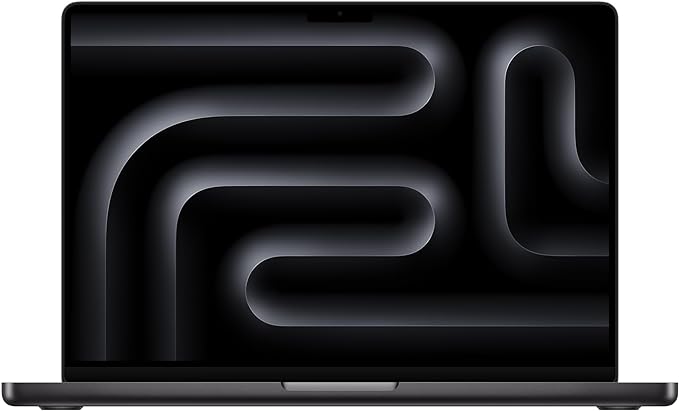
| Model Name | MacBook Pro |
| Screen Size | 14.2 Inches |
| Hard Disk Size | 1 TB SSD |
| Ram Memory Installed Size | 18 GB |
| Operating System | Mac OS |
| Graphics Coprocessor | Apple Integrated Graphics |
The MacBook Pro, equipped with the powerful Apple M3 Pro or M3 Max chips, stands out as an excellent choice for MATLAB users. Here are several reasons why it can be considered one of the best laptops for MATLAB:
Properties of MacBook Pro
- Performance Powerhouse:
- The M3 Pro and M3 Max chips offer up to 12-core and 16-core CPUs, respectively, providing exceptional processing power.
- The up to 18-core GPU in M3 Pro and up to 40-core GPU in M3 Max ensure smooth execution of MATLAB’s graphics-intensive tasks.
- Optimized for Demanding Workloads: Whether you’re manipulating gigapixel panoramas or compiling millions of lines of code, the MacBook Pro’s hardware, including the advanced CPUs and GPUs, is designed to handle demanding MATLAB workflows efficiently.
- Extended Battery Life: With up to 18 hours of battery life, the MacBook Pro ensures that you can work on your MATLAB projects for extended periods without being tethered to a power source.
- Brilliant Pro Display: The 14.2-inch Liquid Retina XDR display with Extreme Dynamic Range and high brightness levels provides a visually immersive experience, crucial for data visualization and analysis in MATLAB.
- Compatibility with Professional Software:
- The MacBook Pro is fully compatible with MATLAB and other professional applications like Apple Xcode and MathWorks MATLAB, ensuring that your software runs smoothly and efficiently.
- Connectivity Options: The laptop offers a variety of ports, including Thunderbolt 4, HDMI, and an SDXC card slot, allowing seamless connectivity with peripherals and external devices often used in MATLAB-related tasks.
- Magic Keyboard with Touch ID: The backlit Magic Keyboard with Touch ID provides a convenient and secure way to access your laptop and MATLAB projects, enhancing overall user experience.
- Advanced Camera and Audio: The 1080p FaceTime HD camera, three-mic array, and six-speaker sound system with Spatial Audio contribute to a superior video conferencing and presentation experience, which is beneficial for collaborative MATLAB projects.
- Mac Ecosystem Integration: Seamless integration with other Apple devices allows for smooth data transfer between devices, enabling you to work efficiently and collaboratively on your MATLAB projects.
- Durability and Longevity: The MacBook Pro’s all-aluminum unibody enclosure is exceptionally durable, and free software updates ensure that the laptop remains up-to-date and functional for years to come.
In summary, the MacBook Pro’s powerful hardware, high-quality display, extensive connectivity options, and seamless integration with MATLAB and other professional applications make it a top choice for individuals working on complex MATLAB simulations, analyses, and programming tasks.
2. MSI Creator Z16P (Best laptop for MATLAB and Solidworks)
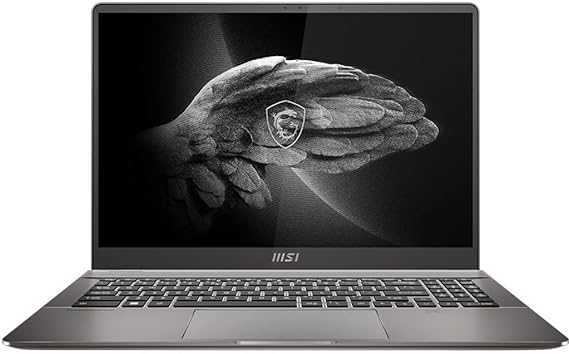
| Model Name | CREATORZ16P040 |
| Screen Size | 16 |
| Color | Gray |
| Hard Disk Size | 1 TB SSD |
| CPU Model | Core i7 |
| Ram Memory Installed Size | 32 GB |
| Operating System | Windows 11 Pro |
| Graphics Card Description | Integrated |
| Graphics Coprocessor | NVIDIA GeForce RTX 3080 Ti |
The MSI Creator Z16P appears to be a strong contender for the title of “Best laptop for MATLAB” based on its key features. Here’s a breakdown of why it could be a good choice for running MATLAB:
Properties of Creator Z16P
- Powerful Processor: The 12th Gen. Intel Core i7 processor is a high-performance chip, well-suited for demanding computational tasks like those involved in MATLAB. MATLAB can benefit significantly from a powerful CPU, and the Z16P’s processor is capable of handling complex calculations with ease.
- Windows 11 Pro Operating System: The inclusion of Windows 11 Pro ensures that the laptop is running a modern and optimized operating system. MATLAB is designed to work well with Windows, and having the latest OS can contribute to overall system stability and performance.
- High-Quality Display: The 16″ 165Hz QHD+ Touch Display with a 16:10 ratio provides ample screen real estate, which is beneficial for working with MATLAB’s multiple windows and data visualization. The high refresh rate can enhance the overall user experience, making interactions with the software smoother.
- Supercharged Graphics: The NVIDIA GeForce RTX 3080 ti is a powerful graphics card. While MATLAB may not heavily rely on GPU acceleration for general tasks, certain operations and toolboxes can take advantage of GPU processing. Additionally, if there is a need for running simulations or applications that benefit from GPU acceleration, the RTX 3080 ti offers substantial power.
- Portability with Long Battery Life: The laptop’s lightweight chassis and the presence of a 90Whr battery make it a suitable choice for users who need to work on MATLAB tasks on the go. This is especially valuable for researchers, students, or professionals who may need to access MATLAB in different environments.
- Versatility for Gaming and Creative Workloads: The laptop’s specifications make it versatile, not only for MATLAB but also for other tasks such as gaming and creative workloads. This versatility ensures that the laptop can handle a wide range of applications, making it a well-rounded choice.
In summary, the MSI Creator Z16P’s combination of a powerful processor, high-quality display, supercharged graphics, and portability makes it a strong candidate for those seeking a laptop for MATLAB, especially if they have additional requirements for gaming or creative workloads.
3. Slim Pro 9 (Best Lenovo laptop for MATLAB)
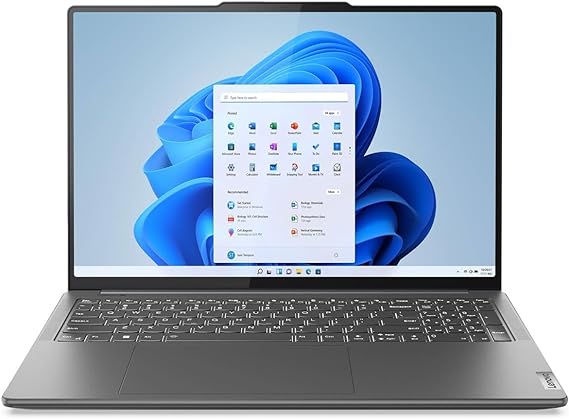
| Model Name | Slim Pro 9 16IRP8 |
| Screen Size | 16 Inches |
| Color | Storm Gray |
| Hard Disk Size | 1 TB SSD |
| CPU Model | Core i9 |
| Ram Memory Installed Size | 32 GB |
| Operating System | Windows 11 Home |
| Special Feature | OGM (On-glass Metal mesh), Anti-fingerprint |
| Graphics Card Description | GeForce RTX 4060 |
The Lenovo Slim Pro 9 appears to be a strong contender for the title of “Best laptop for MATLAB” based on its specifications. Here’s a breakdown of why it could be a good choice:
Properties of Slim Pro 9
- Ample Memory (32 GB): MATLAB is a computational software that often deals with complex algorithms and data sets. The 32 GB of memory on the Lenovo Slim Pro 9 allows users to run multiple MATLAB programs simultaneously without experiencing significant slowdowns. This is particularly beneficial for handling large datasets and complex simulations.
- High-Resolution Display (3200 x 2000): The 16″ display with a resolution of 3200 x 2000 provides impressive clarity. This is crucial for MATLAB users who work with visualizations, plots, and simulations. A high-resolution display enhances the overall user experience and makes it easier to analyze and interpret complex graphical data in MATLAB.
- Large SSD Capacity (1 TB): MATLAB projects often involve working with substantial datasets and files. The 1 TB SSD capacity not only ensures quick data access but also provides ample storage for HD quality videos, movies, photos, music, and other files. This is essential for researchers and professionals who need to store and retrieve large amounts of data efficiently.
- Long Battery Run Time (9.50 Hours): The extended battery run time of 9.50 hours is beneficial for users who need to work on MATLAB projects on the go, especially in situations where a power source may not be readily available. This feature enhances the laptop’s portability and allows users to work for extended periods without interruption.
- Dedicated Graphics Card (NVIDIA GeForce RTX 4060 8 GB): MATLAB, especially with certain toolboxes and applications, can leverage the power of a dedicated graphics card for enhanced performance in tasks like simulations and visualizations. The NVIDIA GeForce RTX 4060 with 8 GB of VRAM provides excellent capabilities for multimedia applications, making it a suitable choice for MATLAB users who require efficient graphics processing.
In summary, the Lenovo Slim Pro 9 combines a robust set of features, including ample memory, a high-resolution display, large SSD capacity, long battery life, and a dedicated graphics card. These features make it well-suited for handling the computational and graphical demands of MATLAB, making it a strong candidate for the title of “Best laptops for MATLAB.”
4. HP Victus 15 (Best gaming laptop for MATLAB)

| Model Name | Victus 15.6 |
| Screen Size | 15.6 Inches |
| Hard Disk Size | 1 TB |
| CPU Model | Intel Core i5 |
| Ram Memory Installed Size | 16 GB |
| Operating System | Windows 11 |
| Special Feature | Backlit Keyboard |
| Graphics Card Description | Dedicated |
| Graphics Coprocessor | NVIDIA GeForce RTX 3050 |
The HP Victus laptop, as described, appears to be a suitable choice for MATLAB due to several key features:
Properties of HP Victus
- Processor: The Intel 13th Generation Core i5 13420H with 8 cores and a clock speed of up to 4.6 GHz provides ample processing power for running MATLAB efficiently. MATLAB can benefit significantly from multi-core processors, especially when performing complex computations or running simulations.
- Memory: With 16GB of DDR4-3200 MHz RAM, this laptop offers sufficient memory capacity for handling MATLAB’s computational tasks, including data analysis, modeling, and simulations. MATLAB often requires a substantial amount of RAM, especially when dealing with large datasets or running memory-intensive algorithms.
- Storage: The 1TB PCIe NVMe SSD storage provides fast read/write speeds, which can help in loading MATLAB and large datasets quickly. Additionally, the ample storage space allows users to store their MATLAB scripts, data, and results without worrying about running out of space.
- Graphics: The NVIDIA GeForce RTX 3050 graphics card provides hardware acceleration for MATLAB’s visualization capabilities. While MATLAB primarily relies on CPU performance, having a dedicated GPU can significantly enhance the performance of certain tasks, such as plotting large datasets or running GPU-accelerated computations.
- Display: The 15.6-inch 144Hz FHD anti-glare display offers a clear and vibrant viewing experience, which is beneficial when working with MATLAB’s visualizations and plots.
- Ports: The variety of ports, including HDMI, USB-A, and USB-C, provide flexibility for connecting external displays, peripherals, and storage devices, which can be useful for expanding the laptop’s capabilities when working with MATLAB.
- Operating System: Windows 11 is compatible with MATLAB and provides a stable and user-friendly environment for running the software.
Overall, the HP Victus laptop offers a balanced combination of performance, memory, storage, and graphics capabilities, making it a suitable choice for running MATLAB effectively and efficiently.
5. XPS 9710 (Best Dell laptop for MATLAB)
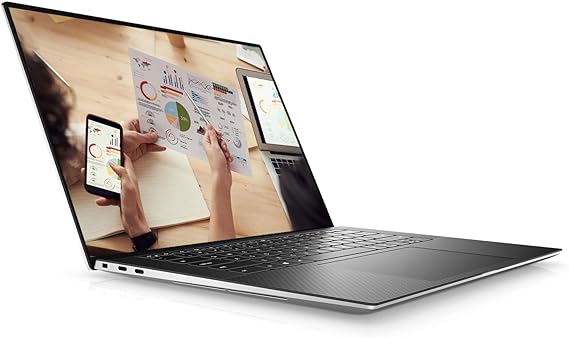
| Model Name | XPS |
| Screen Size | 17 Inches |
| Color | Silver |
| Hard Disk Size | 1 TB |
| CPU Model | Core i7 Family |
| Ram Memory Installed Size | 32 GB |
| Operating System | Windows 11 Pro |
| Special Feature | Backlit Kb |
| Graphics Card Description | NVIDIA GeForce RTX 3060 6GB Dedicated |
The Dell XPS 9710 laptop described above is an excellent choice for MATLAB users due to several key features:
Properties of XPS 9710
- High-Performance Processor: The Intel Core i7-11800H processor with 8 cores and 16 threads, along with a large 24MB Intel Smart Cache, provides significant processing power. MATLAB tasks often benefit from multi-core processing capabilities, enabling faster execution of computations, simulations, and data analyses.
- Ample RAM: With 32GB of high-bandwidth DDR4 RAM, the laptop can efficiently handle complex MATLAB algorithms and simulations. The generous RAM capacity ensures smooth multitasking and allows users to run multiple MATLAB scripts, functions, and applications simultaneously without experiencing performance bottlenecks.
- Powerful Graphics Card: The NVIDIA GeForce RTX 3060 6GB graphics card enhances MATLAB’s visualization capabilities, particularly when dealing with 3D plots, simulations, and graphics-intensive tasks. It accelerates rendering and provides smoother interactions with MATLAB’s graphical user interface (GUI) elements, improving overall user experience.
- Large Storage Space: The 1TB PCIe Solid State Drive (SSD) offers ample storage space for MATLAB datasets, scripts, projects, and other related files. The fast SSD storage ensures quick access to data and reduces loading times, enhancing productivity during MATLAB sessions.
- High-Resolution Display: The 17.0″ UHD+ InfinityEdge Touch display with a resolution of 3840 x 2400 pixels provides sharp, detailed visuals, making it ideal for viewing MATLAB plots, graphs, and numerical results. The anti-reflective coating and 500-nit brightness enhance visibility, even in brightly lit environments.
- Connectivity Options: The laptop’s array of ports, including four Thunderbolt 4 ports with power delivery and DisplayPort support, facilitates seamless connectivity with external displays, peripherals, and storage devices. This versatility is advantageous for MATLAB users who may need to connect multiple monitors or external hardware for data acquisition and analysis.
- Windows 11 Pro: The pre-installed Windows 11 Pro operating system offers a modern and intuitive user interface, enhancing productivity and collaboration. Features such as pre-configured app layouts and improved multitasking capabilities can streamline MATLAB workflows and boost efficiency.
Overall, the Dell XPS 9710 laptop combines high-performance hardware, ample storage, advanced graphics capabilities, and user-friendly features, making it an excellent choice for MATLAB users seeking a powerful and versatile computing solution.
6. ASUS Vivobook 16X (Best laptop for MATLAB and AutoCAD)
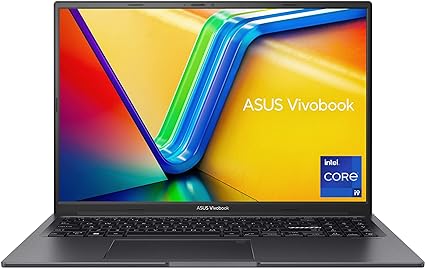
| Model Name | Vivobook 16X |
| Screen Size | 16 Inches |
| Color | Indie Black |
| Hard Disk Size | 1 TB |
| CPU Model | Core i9 |
| Ram Memory Installed Size | 32 GB |
| Operating System | Windows 11 Home |
| Special Feature | Fingerprint Reader, Spill resistant, High Definition Audio, Anti Glare Coating |
| Graphics Card Description | Integrated, Dedicated |
The ASUS Vivobook 16X OLED Laptop is an excellent choice for running MATLAB, a powerful computing environment for numerical computation, visualization, and programming, due to several key features that align well with MATLAB’s performance requirements:
Properties of Vivobook 16X
High-Performance Processor
- Intel Core i9-13900H Processor: The 14-core, 20-thread configuration, with speeds up to 5.4 GHz, provides exceptional computational power. MATLAB benefits greatly from multi-core processors, especially when running complex simulations, data analysis, and parallel computing tasks.
High-Resolution and High-Quality Display
- 16” 3.2K OLED Display (3200 x 2000): The high resolution and OLED technology with 100% DCI-P3 color gamut and HDR True Black 500 certification ensure crisp, vibrant visuals. This is particularly useful for MATLAB’s graphical output, plots, and visualizations, enabling users to see data in high detail.
- 120Hz Refresh Rate and 0.2ms Response Time: These features enhance the smoothness of visualizations and reduce lag, which is beneficial for interactive data analysis and real-time simulations.
Powerful GPU
- NVIDIA Geforce RTX 4060: This GPU, with 8GB GDDR6 VRAM, accelerates MATLAB’s performance in GPU computing tasks. Many MATLAB toolboxes, such as Parallel Computing Toolbox and certain deep learning applications, leverage GPU acceleration for significantly faster computations.
Ample Memory and Storage
- 32GB DDR4 RAM (16GB SO-DIMM + 16GB onboard): Large memory is essential for handling large datasets, running multiple MATLAB instances, and performing memory-intensive operations without slowdowns.
- 1TB M.2 NVMe PCIe 3.0 SSD: Fast storage ensures quick loading of large files and datasets, faster boot times, and efficient read/write operations, which is critical for data-heavy MATLAB applications.
Extensive Connectivity
- Thunderbolt 4, USB 3.2, HDMI 2.1, SD Card Reader: These connectivity options facilitate easy connection to external displays, storage devices, and other peripherals. Thunderbolt 4, in particular, is ideal for high-speed data transfer and connecting multiple high-resolution monitors, which can enhance productivity in a MATLAB-centric workflow.
Advanced Networking
- Wi-Fi 6E and Bluetooth 5: These advanced networking options ensure fast and stable internet connections, which are beneficial for downloading large datasets, accessing cloud-based MATLAB services, and collaborating with remote teams.
Additional Features
- Windows 11 Home: The latest operating system from Microsoft ensures compatibility with the latest versions of MATLAB and related toolboxes, offering improved security and user experience enhancements.
Overall, the ASUS Vivobook 16X OLED Laptop provides a comprehensive suite of features that cater to the demands of MATLAB users, from high computational power and superior graphics performance to ample memory and storage, making it a top contender in the category of laptops suited for MATLAB.
Conclusion – Best laptops for MATLAB
Choosing the best laptop for MATLAB ultimately depends on your specific needs and budget. Whether you prioritize raw processing power for heavy simulations, portability for on-the-go work, or a balance between performance and affordability, there’s a perfect machine out there for you. Take your time to consider your workflow, research specifications, and check online reviews before making your choice. Remember, investing in a reliable laptop will empower your MATLAB journey and unlock your full potential in the world of scientific computing. Happy crunching!
FAQs – Best laptops for MATLAB
Unleashing the power of MATLAB: Unraveling the FAQs on the best laptops for your numerical wizardry! Whether you’re a seasoned engineer crunching complex simulations or a budding data scientist diving into the world of matrices, finding the perfect laptop for MATLAB can feel like a daunting equation. Fear not, intrepid analyst! This FAQ guide cuts through the technical jargon and dissects the key considerations for choosing the ideal machine to fuel your MATLAB mastery. Dive in and discover the processors, RAM, GPUs, and other crucial factors that determine your laptop’s MATLAB muscle, so you can confidently choose the champion for your computational endeavors!
In this section, we will look for answers to the following frequently asked questions about laptops for MATLAB.
- Which laptop is best for MATLAB?
- Which processor is best for MATLAB?
- What is the best workstation for MATLAB?
- Does MATLAB need a good GPU?
- How much RAM is required for MATLAB?
- Does MATLAB run on CPU or GPU?
- Is MATLAB CPU or GPU intensive?
- Best laptop for MATLAB 2020
- Best desktop for MATLAB
- Best CPU for MATLAB
- Best GPU for MATLAB
1. Which laptop is best for MATLAB?
There isn’t one single “best” laptop for MATLAB, as the ideal choice depends on your specific needs and budget. However, I can help you narrow down your options by considering the following factors:
MATLAB Requirements:
- Processor: MATLAB prefers high core count CPUs like Intel i7 or AMD Ryzen 7/9 with high clock speeds. More cores and higher clock speeds improve performance for heavy computations.
- RAM: Aim for at least 16GB of RAM, with 32GB or more recommended for large datasets and complex simulations.
- Storage: Consider an SSD for faster loading times and overall system responsiveness. Look for at least 512GB of storage, and expand with external drives if needed.
- Graphics Card: While not essential for basic MATLAB usage, a dedicated GPU can significantly improve performance for tasks involving visualization and graphics processing. Nvidia GPUs tend to have better compatibility with MATLAB.
Your Needs:
- Portability: Do you need a lightweight and thin laptop for travel and on-the-go use, or prefer a larger screen and powerful desktop replacement?
- Battery Life: If you work away from outlets often, prioritize laptops with good battery life.
- Budget: Set a realistic budget and find the best laptop within your price range.
2. Which processor is best for MATLAB?
Determining the “best” processor for MATLAB depends on your specific needs and budget, as different types of work prioritize different aspects of CPU performance. Here’s a breakdown to help you choose:
Minimum requirements:
- Intel or AMD x86-64 processor: Any processor with this architecture will run MATLAB, but expect basic performance.
- Two or more cores: Multicore processors significantly improve multitasking and handling complex calculations.
Recommended specifications for most users:
- Four or more cores: This is the sweet spot for most MATLAB tasks, offering good performance and balance.
- High clock speed: Look for processors with clock speeds above 3.0 GHz for faster processing.
- AVX2 instruction set support: This set of instructions optimizes MATLAB performance for specific calculations.
- Consider hyper-threading: Hyper-threading allows one core to handle multiple threads, further improving performance for some workloads.
For heavy computational tasks or large datasets:
- 8 or more cores: More cores benefit parallel processing tasks and handling massive data sets.
- High clock speeds: 3.5 GHz or above is ideal for demanding computations.
- Consider additional features: Look for processors with Turbo Boost or Precision Boost technologies for automatic performance boosts under heavy load.
Specific processor options:
- Intel: 12th/13th Gen Intel Core i7 or i9 series offer excellent performance and AVX2 support.
- AMD: Ryzen 5000 or 7000 series CPUs provide great value and performance, with many models supporting AVX2.
Other important factors:
- RAM: 16GB RAM is the minimum for smooth operation, consider 32GB or more for large projects.
- SSD: An SSD significantly improves loading times and overall responsiveness compared to HDDs.
Remember:
- Your specific workflow: Analyze what types of tasks you perform in MATLAB most often and prioritize processor features accordingly.
- Budget: Choose a processor that fits your budget while meeting your performance needs.
- MATLAB version: Newer versions may have stricter requirements, check the system requirements for your specific version.
3. What is the best workstation for MATLAB?
There’s no single “best” workstation for MATLAB, as the ideal setup depends on your specific needs and budget. However, I can help you narrow down your options by considering these key factors:
Your workload:
- RAM: If you work with large datasets or complex simulations, prioritize at least 32GB of RAM, and consider 64GB or even 128GB for heavy workloads.
- CPU: Opt for a high-performance processor like an Intel Core i7 or i9, or AMD Ryzen 7 or 9. Look for CPUs with a strong single-core performance and high clock speeds, as MATLAB utilizes single-core threading heavily.
- GPU: Consider a dedicated graphics card (GPU) if you do intensive graphical manipulation, deep learning, or parallel computing. NVIDIA Quadro cards are certified for MATLAB compatibility and stability.
- Storage: Choose a fast SSD for the operating system and MATLAB installation for faster loading times. A secondary HDD can be used for storing data.
Other important factors:
- Operating System: MATLAB officially supports Windows and macOS, but Linux compatibility is limited. Choose your preferred OS based on your comfort and existing software compatibility needs.
- Monitor: Get a high-resolution monitor (preferably 4K) with good color accuracy if you work with visualizations or data analysis.
- Cooling: Consider your system’s thermal dissipation under load. Opt for good case airflow and potentially even liquid cooling for heavy workloads.
4. Does MATLAB need a good GPU?
Whether MATLAB needs a good GPU depends on how you plan to use it. Here’s a breakdown:
No GPU needed for basic use:
- For basic tasks like numerical computations, data analysis, and visualization, a good CPU is sufficient. Most modern laptops and desktops have CPUs powerful enough for these tasks.
GPU recommended for some features:
- Hardware-accelerated graphics: A decent GPU with 1GB of memory and support for OpenGL 3.3 is recommended for smoother graphics rendering and user interface responsiveness. This is especially beneficial if you work with large datasets or complex visualizations.
- Parallel Computing Toolbox: This toolbox leverages GPUs for computationally intensive tasks like deep learning, image and signal processing, and scientific computing. To use it effectively, you’ll need a NVIDIA GPU with compute capability 3.0 or higher.
Factors to consider when choosing a GPU:
- Your workload: If your work primarily involves basic tasks, a basic GPU or integrated graphics will suffice. But for computationally intensive tasks, a more powerful GPU is needed.
- Budget: GPUs can range in price from a few hundred dollars to several thousand. Choose one that fits your budget and workload requirements.
- Compatibility: Make sure the GPU you choose is compatible with your operating system and MATLAB version.
Here’s a table summarizing the GPU requirements for different MATLAB uses:
| Use Case | GPU requirement |
|---|---|
| Basic tasks | Not required |
| Hardware-accelerated graphics | Decent GPU with 1GB memory, OpenGL 3.3 support |
| Parallel Computing Toolbox | NVIDIA GPU with compute capability 3.0 or higher |
Ultimately, the decision of whether or not to get a good GPU for MATLAB depends on your specific needs and budget. If you’re unsure, consider starting with a basic setup and upgrading later if needed.
5. How much RAM is required for MATLAB?
The amount of RAM you need for MATLAB depends on various factors like:
Basic usage:
- Minimum: MathWorks recommends at least 4 GB of RAM for basic MATLAB usage on Windows, Mac, and Linux without Simulink or Polyspace.
- Recommended: 8 GB or more is ideal for improved performance, especially with larger datasets or complex computations.
Advanced usage:
- Simulink: If you use Simulink, the minimum recommendation jumps to 8 GB of RAM.
- Parallel Computing: For MATLAB Parallel Server, each worker needs at least 4 GB of RAM, while 8 GB is recommended for Simulink-heavy tasks.
- Specific tasks: Specific toolboxes or workflows within MATLAB may have their own RAM requirements. Check the documentation for your specific tasks.
General tips:
- More is better: Generally, more RAM allows for smoother workflows and faster processing. Consider your typical workload and budget when choosing RAM.
- Monitor RAM usage: Track your RAM usage while working with MATLAB to see if you’re hitting bottlenecks. This can help decide if you need more RAM.
- Consider other factors: Besides RAM, processor, storage, and graphics card also impact MATLAB performance. Ensure a balanced system for optimal experience.
Ultimately, the ideal RAM amount depends on your specific needs. Start with the basic recommendations and adjust based on your workload and performance needs.
6. Does MATLAB run on CPU or GPU?
While MATLAB can run on both CPU and GPU, it primarily uses the CPU by default. However, you can leverage the power of GPUs for specific tasks to significantly speed up computationally intensive workflows. Here’s a breakdown:
CPU execution:
- This is the default mode for MATLAB. Most functions and scripts run on the CPU cores of your computer.
- It’s suitable for general code, basic numerical calculations, and smaller datasets.
GPU acceleration:
- MATLAB supports running specific functions on GPUs through the Parallel Computing Toolbox (PCT).
- This significantly improves performance for tasks like:
- Large-scale matrix operations
- Deep learning
- Image and signal processing
- Numerical simulations
Key points:
- Not all MATLAB functions are optimized for GPUs. You need to identify and use supported functions or rewrite your code to take advantage of the GPU.
- Using GPUs might require additional setup and configuration depending on your hardware and system.
- While GPUs often offer significant performance increases, they might not be necessary or beneficial for every task.
Overall, whether MATLAB runs on CPU or GPU depends on the specific functions you’re using and your hardware configuration. By understanding the capabilities of both CPUs and GPUs, you can choose the best approach to optimize your MATLAB performance for different tasks.
7. Is MATLAB CPU or GPU intensive?
Whether MATLAB is CPU or GPU intensive depends largely on what you’re doing with it. Both CPUs and GPUs can play significant roles in different aspects of MATLAB usage. Here’s a breakdown:
CPU-intensive tasks in MATLAB:
- General calculations: Most basic mathematical operations, like matrix manipulations, solving linear systems, and numerical integration, rely heavily on the CPU.
- Simulink simulations: Building and running simulations in Simulink mainly utilizes the CPU, especially for non-real-time applications.
- Data import and export: Reading and writing large datasets involve significant disk I/O and memory management, which primarily rely on the CPU.
- User interface: Running the MATLAB interface, including the command window and graphical elements, is primarily handled by the CPU.
GPU-intensive tasks in MATLAB:
- Deep learning and machine learning: Training and running deep learning models, especially for large datasets, can significantly benefit from the parallel processing power of GPUs.
- Image and signal processing: Many image and signal processing algorithms, like filtering, convolution, and FFTs, can be efficiently parallelized on GPUs.
- High-performance computing: For computationally intensive tasks like numerical simulations and large-scale optimization, GPUs can offer significant speedups compared to CPUs.
Factors to consider:
- Type of algorithms: Different algorithms have different levels of CPU and GPU affinity. Some algorithms are inherently more suited for parallel processing on GPUs, while others rely more on sequential execution on the CPU.
- Data size: Larger datasets can benefit more from the parallel processing power of GPUs, especially for tasks like deep learning and image processing.
- Hardware configuration: The available CPU and GPU resources on your system will significantly impact performance. A powerful GPU can significantly improve performance for GPU-intensive tasks, but a weak CPU can still be a bottleneck even for tasks that can utilize the GPU.
In conclusion:
MATLAB can be both CPU and GPU intensive depending on the specific task. Understanding the type of algorithms you’re using, the size of your data, and your hardware configuration is crucial for determining which resource is more important for optimizing your performance.
8. Best laptop for MATLAB 2020
While MATLAB 2020 is no longer the latest version, it still has the same system requirements as the current version.
These laptops are both powerful and portable, making them a good choice for students and professionals who need to use MATLAB on the go. They also come with a variety of configurations, so you can choose one that fits your budget and needs.
9. Best desktop for MATLAB
Here are some general recommendations for desktops for MATLAB, based on budget:
- Budget: For basic MATLAB use, a mid-range desktop with a Core i5 processor, 16 GB of RAM, and a 500 GB SSD will suffice.
- Mid-range: If you’re doing more demanding work, such as running simulations or working with large datasets, then you’ll want a higher-end desktop with a Core i7 or Xeon processor, 32 GB of RAM, and a 1 TB SSD.
- High-end: For the most demanding MATLAB workloads, such as deep learning or computational fluid dynamics, you’ll need a high-end workstation with a Xeon processor, 64 GB of RAM or more, and an NVIDIA GPU.
Here are some specific desktop recommendations that may be a good fit for MATLAB:
- Budget: Dell XPS 8940
- Mid-range: Puget Systems Thelema
- High-end: Lenovo ThinkStation P620
10. Best CPU for MATLAB
The “best” CPU for MATLAB depends on your specific needs and workflow. Here’s a general guideline:
- Minimum: Any Intel or AMD x86-64 processor with two or more cores.
- Recommended: Any Intel or AMD x86-64 processor with four or more cores and AVX2 instruction set support. Newer versions of MATLAB will require AVX2.
Here are some factors to consider when choosing a CPU for MATLAB:
- Core count: MATLAB can take advantage of multiple cores, so a higher core count will generally improve performance. However, some MATLAB tasks are still single-threaded, so clock speed is also important.
- Clock speed: A faster clock speed will improve the performance of single-threaded tasks.
- Instruction set support: Make sure your CPU supports the AVX2 instruction set, which is required for some newer versions of MATLAB.
Some good options for CPUs for MATLAB include:
- High-end: Intel Core i9-13900K or AMD Ryzen Threadripper 5995WX
- Mid-range: Intel Core i7-12700K or AMD Ryzen 7 7800X
- Budget: Intel Core i5-12600K or AMD Ryzen 5 5600X
11. Best GPU for MATLAB
The best graphics card (GPU) for MATLAB depends on your specific needs and budget. Here’s a breakdown of what to consider:
Basic MATLAB usage:
- Minimum requirements: Any recent graphics card with OpenGL 3.3 support and 1GB of GDDR memory will suffice for basic MATLAB functionality.
MATLAB for Deep Learning and other compute-intensive tasks:
- Focus on NVIDIA GPUs: MATLAB primarily leverages NVIDIA’s CUDA parallel computing architecture. While AMD is making strides in this area, NVIDIA GPUs are currently the better choice for MATLAB acceleration.
- Consider CUDA Cores and Memory: More CUDA cores generally translate to faster performance for parallel processing tasks. Memory capacity is crucial for handling large datasets.
Here are two strong options to consider:
- NVIDIA GeForce RTX 3080: This powerful consumer-grade GPU offers excellent performance for its price. It boasts 8704 CUDA cores and 10GB of GDDR6X memory, making it suitable for various deep learning and scientific computing tasks.
- NVIDIA Quadro RTX 6000: This professional-grade GPU is built for demanding workloads. It features 4608 CUDA cores and a whopping 24GB of GDDR6 memory, ideal for complex simulations and large datasets. However, it comes at a significantly higher cost.
Additional Tips:
- Check Compatibility: Ensure your chosen GPU is compatible with your motherboard and operating system.
- Consider SLI/NVLink: If you work with massive datasets or require extreme performance, consider using two compatible GPUs in a SLI or NVLink configuration for increased processing power.
- Research and Reviews: Carefully research GPUs and read reviews from trusted sources to find the optimal choice for your workflow and budget.
By considering these factors, you can select the best GPU to optimize your MATLAB performance for your specific needs.

